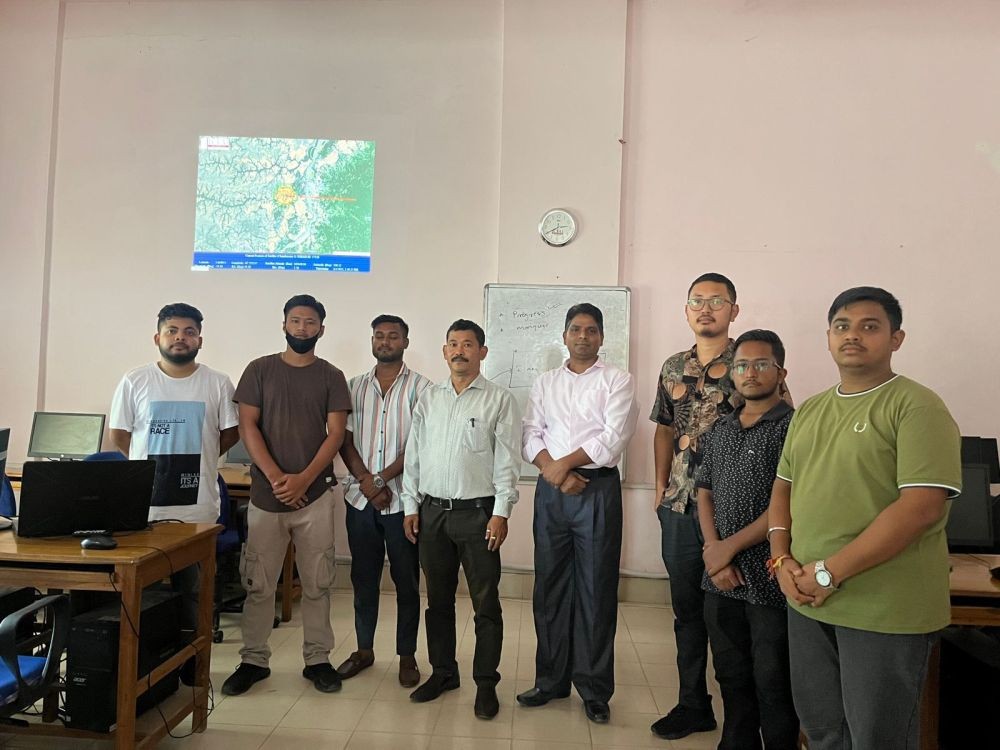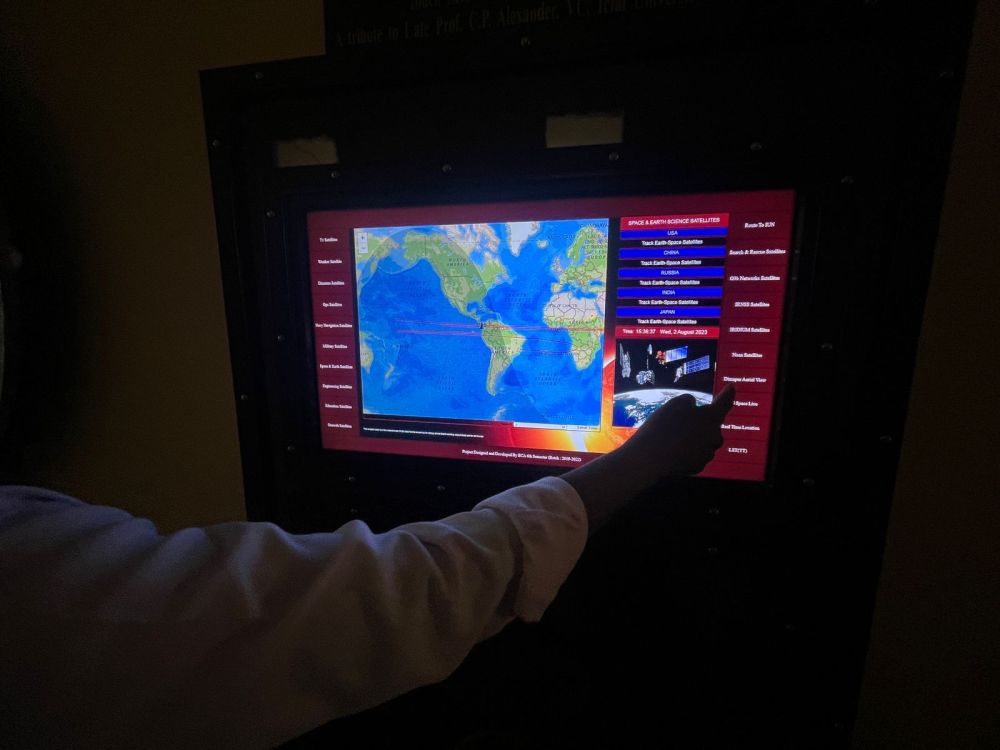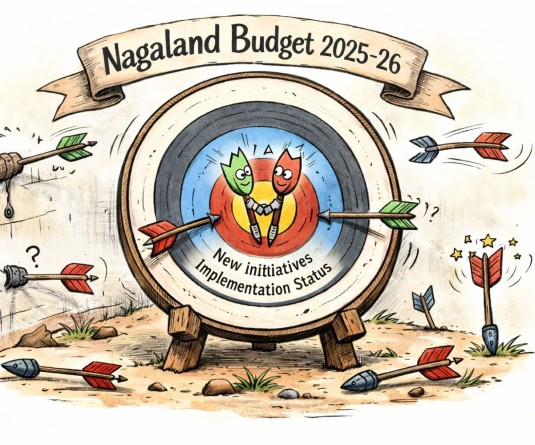Faulty members of Department of Computer Science, ICFAI University Nagaland along with students at their computer lab. (Morung Photo)

Mongsentong Longkumer
Dimapur | August 6
Considered a first of its kind in Nagaland, a group of students under the supervision of their teaching faculty from the Department of Computer Science, ICFAI University, Chümoukedima has self-developed an in-house application to track in real time, the Chandrayaan-3 mission.
Taking the assistance of NASA’s Two-Line Element (TLE) datasets for observation of any satellite’s orbit and a real-time satellite tracking system/application, the team of recent Master of Computer Application (MCA) graduates under the guidance of Kamal, a lecturer of the Department, claimed to have been successfully tracking the coordinates of the Chandrayaan for the last few weeks since its launch.
.jpg)
On July 14 this year, the the Indian Space Research Organisation (ISRO) launched Chandrayaan-3 with the aim of sending a lander and a rover to the lunar surface of the Moon.
“Prior to the launch of Chandrayaan, some of our students suggested, why don’t we track its orbital movement,” Kamal said to The Morung Express. An email was sent in this regard was sent to ISRO, informing them about their intent.
The space agency was likewise were positive in their response towards the proposal and even inquired as to the process with which they went out doing the project, he shared.

The faculty member explained that the tracking system had already been developed before-hand by the department last year with the help of their students.
An-open source interactive map called Leaflet was then used as per the requirements of their project and after obtaining Chandrayaan’s Satellite Catalogue Number (SATCAT No.) they were able to track its movement across Earth’s orbit.
The application enables them to easily track, monitor and update the movements of the space object heading towards its destination as it sends back its coordinates using the given satellite number. This is then shown on the map for better visual understanding.
Upon the completion of the mission and regardless of the end results, “We will be writing a research paper based on the data we obtain,” he added. All the data right now were being accumulated in the department’s computer.
“Our local students have lots of potential; we just need to provide them the right platform,” Kamal viewed.
“Of course this is not a time initiative as we hope to track more such satellites launched by ISRO or by other space agencies in the days to come,” shared Oinam Bhopen Singh, Assistant Professor and Head of Department (HoD) Computer Science.
Apart from this, Singh also highlighted that the students have also been in the process of developing a ‘Digital Human Assistant AI bot’ which one can communicate with. “For us it is limited to only this project, more applications are in the pipeline with the help of our students,” he noted.
In the past, the department’s students had managed to successfully develop several successful applications such as a Touch Screen Digital Interactive KIOSK, Gold Cultural Tree of Naga Tribes (augmented reality) which was inaugurated by former Governor PB Acharya in 2019 and many more.
“So many interesting ideas are coming out from the students themselves and this is what we are trying to groom,” Singh maintained.
One of its students, Bikash Pradhan who recently completed his MCA revealed that a plan was to develop a language assistance application to assist people from the remote areas of the state. “My intention is to help translate English or Nagamese into the local dialect for people who may not necessarily understand both the two languages,” he said.
For Singh, the overall objective was to transform their university into a hub for technological and intellectual innovation brining in young and talented minds from across Nagaland and beyond.






